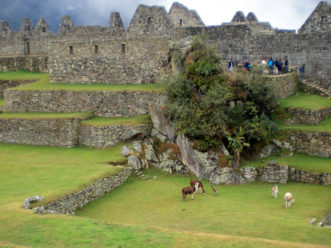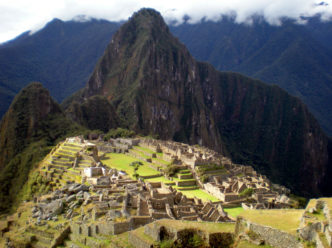 Growing up, there were two works of art that made a big impression on me. One was the Mona Lisa and the other was Picasso’s Les Demoiselles d’Avignon. Poster-sized versions (24″ x 36″) were mounted in my father’s study, and I’d see them regularly. They were significant not because I found them beautiful or fascinating, but based on my experience when I saw them in real life for the first time.
Growing up, there were two works of art that made a big impression on me. One was the Mona Lisa and the other was Picasso’s Les Demoiselles d’Avignon. Poster-sized versions (24″ x 36″) were mounted in my father’s study, and I’d see them regularly. They were significant not because I found them beautiful or fascinating, but based on my experience when I saw them in real life for the first time.  The Mona Lisa is much smaller and the Picasso is enormous compared to the poster: roughly 8 ft by 8 ft. My expectations of each were turned upside down. I couldn’t reconcile the indelible image in my mind with the real thing. The Da Vinci was less compelling while the Picasso overwhelmed me. I recall it took me a few moments to view the art as it was—rather than what I thought it should be.
The Mona Lisa is much smaller and the Picasso is enormous compared to the poster: roughly 8 ft by 8 ft. My expectations of each were turned upside down. I couldn’t reconcile the indelible image in my mind with the real thing. The Da Vinci was less compelling while the Picasso overwhelmed me. I recall it took me a few moments to view the art as it was—rather than what I thought it should be.
I’ve never felt this more keenly than at Machu Picchu. As a teen I was rabid to visit the Incan ruins once I saw the documentary Chariots of the Gods, based on the Erich Von Daniken book. The movie theorized that aliens were responsible for its construction along with other ancient mysteries, like the pyramids. A place built by aliens? How could I not see that?! Finally, this summer, a teen dream was fulfilled.
For the first hour in Machu Picchu, I had to pinch myself because a) I couldn’t believe I was there, and b) I again had to reconcile my expectations. While the stone ruins were absolutely a marvel of engineering: How were granite stones fitted seamlessly without mortar? How were the structures built without the use of the wheel? Was it a city, temple, agricultural center or all three? … What transfixed me more was the landscape. The breathtaking site was framed by the magnificent Huayna Picchu or “young peak.” No photo can truly capture it. As the mist rolled in and out during the day, the mysteries of the sacred citadel were amplified even more.
Here are a few photos. Of course, they don’t do it justice, but for me, they are a new placeholder in my mind of the real thing.
As for the alien theory, I’m no longer buying it.











